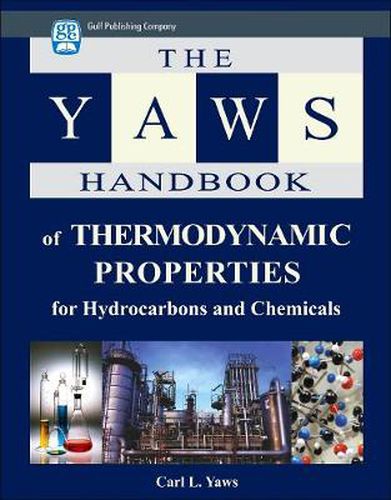Readings Newsletter
Become a Readings Member to make your shopping experience even easier.
Sign in or sign up for free!
You’re not far away from qualifying for FREE standard shipping within Australia
You’ve qualified for FREE standard shipping within Australia
The cart is loading…






Written by one of the most prolific and well-respected chemical engineers in the industry, this is the most comprehensive and thorough volume ever written on the thermodynamic properties of hydrocarbons and chemicals. This volume covers the spectrum, including chapters on the heat capacity and entropy of gas, solids and liquids, the entropy of formation, and many other topics. The design of heat exchangers and other equipment for heating or cooling substances to temperatures necessary in process applications requires knowledge of heat capacity, covered in the first portion of the book. The heat effects of chemical reactions are ascertained from enthalpy of formation. Other chapters cover the Helmholtz energy of formation and internal energy of formation, which is useful in modeling and ascertaining the energy of explosions. This coverage greatly exceeds the coverage of any other book and makes The Yaws Handbook of Thermodynamic Properties of Hydrocarbons and Chemicals a must-have for anyone working in the fields of chemical engineering, process engineering, refining and chemistry.
$9.00 standard shipping within Australia
FREE standard shipping within Australia for orders over $100.00
Express & International shipping calculated at checkout
Written by one of the most prolific and well-respected chemical engineers in the industry, this is the most comprehensive and thorough volume ever written on the thermodynamic properties of hydrocarbons and chemicals. This volume covers the spectrum, including chapters on the heat capacity and entropy of gas, solids and liquids, the entropy of formation, and many other topics. The design of heat exchangers and other equipment for heating or cooling substances to temperatures necessary in process applications requires knowledge of heat capacity, covered in the first portion of the book. The heat effects of chemical reactions are ascertained from enthalpy of formation. Other chapters cover the Helmholtz energy of formation and internal energy of formation, which is useful in modeling and ascertaining the energy of explosions. This coverage greatly exceeds the coverage of any other book and makes The Yaws Handbook of Thermodynamic Properties of Hydrocarbons and Chemicals a must-have for anyone working in the fields of chemical engineering, process engineering, refining and chemistry.